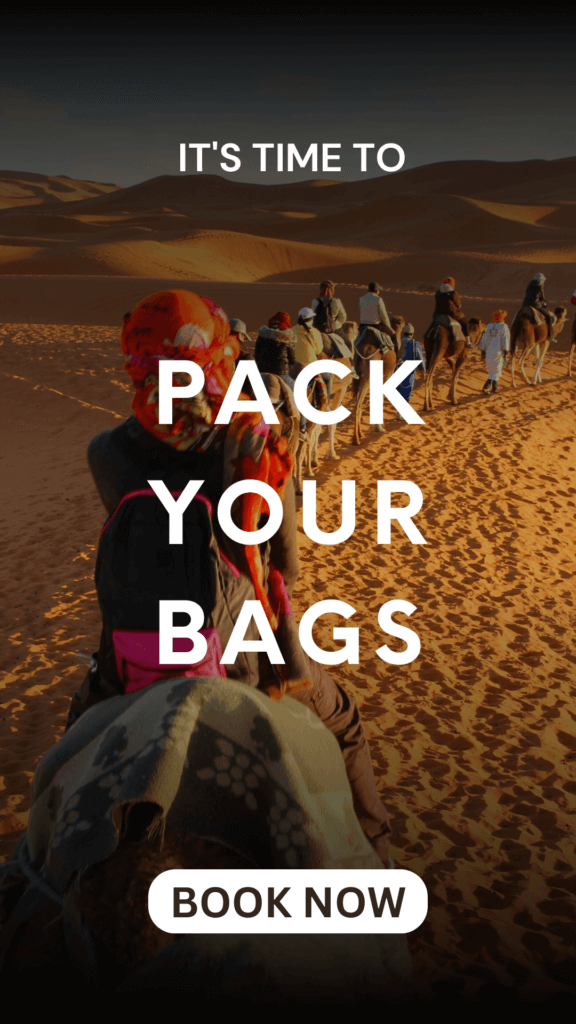Discover Morocco’s Thrilling Climbing Paradises
Interested in visiting Morocco as a rock climber?
We sometimes get the question from rock climbers: are there any good places to climb in Morocco?
Hello there, are you seeking for the best climbing guide in Morocco? You’ve arrived to the correct location.
Rock climbing is a sport in which you climb up, down, or over natural or man-made rocks with the primary aim of reaching the summit without falling. Don’t you think it’s a lot of fun?
We sometimes get the question from rock climbers: are there any good places to climb in Morocco?
Absolutely! Morocco offers a plethora of breathtaking climbing destinations that will satisfy even the most adventurous climbers. With its diverse landscapes, from soaring mountains to dramatic cliffs, the country presents a wide range of challenging and awe-inspiring routes. Whether you’re a beginner looking to test your skills or an experienced climber seeking new horizons, Morocco has something for everyone. From the famous Todra Gorge with its towering limestone walls to the majestic Atlas Mountains offering multi-pitch routes, you are bound to find your perfect climbing adventure in this enchanting North African country.
If you are looking for a serious climbing tour, we highly recommend using Climb Morocco. They are a trusted company with Certified Climbing Guides and cater to beginners through experts. They have consistently high ratings on TripAdvisor.
Are you excited yet? We know we are, so read on and we’ll tell you more!
Table of Contents
Best Places to Climb in Morocco:
1: Todra Gorges.

Todra Gorges is the perfect place to go rock climbing if you are planning to pay the Sahara a visit when you’re in Marrakech. As one of the top climbing destinations for Morocco, Todra Gorge has been visited by climbers from all over the world since the 1960s.
There is a good variety of trails for climbing in Todra Gorge perfect for all levels of rock climbers, from beginners to advanced climbers. The mountain or rocks have options that range from a single-pitch roadside route to multi-pitch adventures that can be long and hard.
As one of Morocco’s biggest and well-developed climbing areas, Todra Gorges have great quality limestone rocks and over 460 routes for you to explore depending on the level of challenge and difficulty you’re looking to do.
You can climb throughout the year here although, summers can get really hot but don’t worry, either side of the gorge will have sun and shade so you won’t be climbing in the sun all day.
The best time to go rock climbing in Todra Gorge is actually in spring (February to late May) and autumn (September to November) where the weather is nice and cool.
A Photographer’s Paradise
For photographers and nature enthusiasts, Todra Gorges is a dream come true. The interplay of light, shadow, and the deep red hues of the rock make for stunning compositions. Whether you’re an amateur with a smartphone or a professional with high-end equipment, you’ll find countless opportunities to capture the essence of this natural wonder.
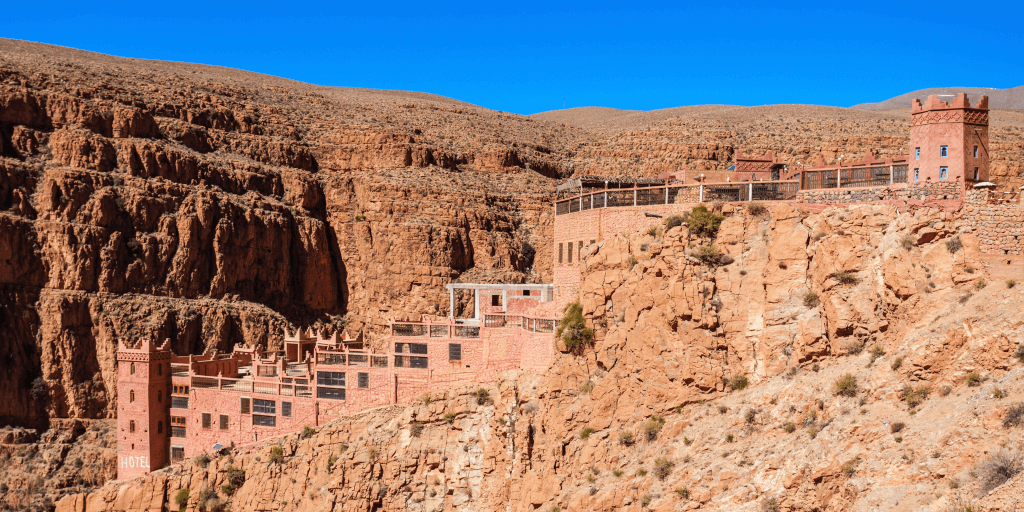
Outdoor Adventures Await
Rock Climbing
Todra Gorges is a world-renowned destination for rock climbers. The sheer limestone walls offer an array of climbing routes suitable for all levels of experience, from beginners to experts. Climbers are rewarded with unparalleled vistas as they ascend the cliffs, making this a must-visit spot for anyone seeking an adrenaline rush.
Hiking and Trekking
If you prefer to keep your feet on solid ground, the region surrounding Todra Gorges offers excellent hiking and trekking opportunities. You can explore the nearby oases, lush palm groves, and traditional Berber villages. The gorges themselves provide an impressive backdrop for a leisurely stroll or a challenging trek.
Immersing in Berber Culture
The Local Community
The Todra Gorges region is home to the indigenous Berber people, who have inhabited this rugged terrain for centuries. Visiting their villages offers a chance to experience their unique way of life. You can partake in traditional Berber tea ceremonies, sample local cuisine, and purchase handmade crafts and textiles.
Festivals and Celebrations
If your visit coincides with local festivals and celebrations, you’ll have the opportunity to witness Berber traditions and festivities up close. These events are a celebration of music, dance, and community spirit, providing insight into the rich cultural heritage of the region.
Practical Tips for Your Visit
- Best Time to Visit: The ideal time to explore Todra Gorges is during the spring and autumn months when the weather is pleasant and the landscape is at its most vibrant.
- Accommodation: There are various accommodation options available in nearby towns like Tinerhir and Tinghir, ranging from budget-friendly guesthouses to more upscale hotels.
- Local Guides: Consider hiring a local guide to help you navigate the gorges, learn about the local culture, and discover hidden gems.
- Respect the Environment: Always respect the natural beauty of Todra Gorges and the cultural traditions of the Berber people. Leave no trace and be mindful of the local way of life.
2: Jebel el Kest.

Stretching majestically along the northern fringe of the Ameln Valley and forming the sturdy backbone of the Anti-Atlas mountain range north of Tafraout lies the formidable massif known as Jebel el Kest. At its zenith stands Afa-n-Tmezgadiwine, soaring to an impressive 2375 meters (7792 feet) above sea level, often simply referred to as ‘Jebel el Kest.’
This colossal escarpment spans a remarkable 35 kilometers (22 miles), extending from the lofty Tizim Waylim pass (1745m) above Tanalt in the west to the imposing Tarakatine Pass (1655m) in the east. The entire ridge maintains an elevation exceeding 2000 meters above sea level along its extensive course.
Jebel el Kest commands dominance over the Anti-Atlas, profoundly shaping its topography, influencing its scenery, and leaving an indelible mark on its inhabitants. It serves as the primary source of freshwater for the numerous settlements dotting its periphery and, unsurprisingly, ranks among Tafraout’s most coveted tourist attractions.
Throughout the year, adventure enthusiasts are guided by tour companies to conquer this magnificent summit, often commencing their ascent from the Ameln Valley with an overnight stay in Tagdicht.
This route offers the most accessible path to the mountain’s peak but entails a challenging climb, involving a daunting 1000 meters of elevation gain over just slightly more than 4 kilometers. This arduous trek is a favorite among tourists, both domestic and international, drawn by its steep and exhilarating nature.
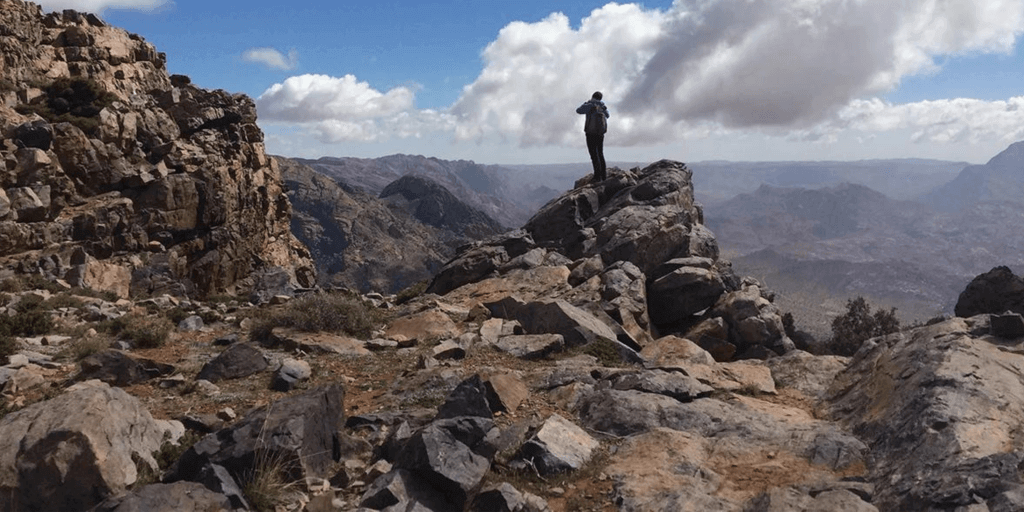
For those starting their journey from Anergui, Jebel el Kest remains veiled, its trail less conspicuous. Yet, for seasoned climbers, it presents a tantalizing alternative: a slightly shorter trek, a gentler elevation gain, and the enticing prospect of blending the ascent with thrilling mountaineering endeavors.
The vista from the summit is nothing short of awe-inspiring. On a clear day, the panoramic view extends as far as the Atlas Mountains, the Atlantic Ocean, and the Sahara Desert, all unfolding simultaneously before one’s eyes—an unparalleled privilege and a pinnacle experience for every traveler exploring the Anti-Atlas. Thus, ascending Jebel el Kest is not only highly recommended but also serves as a rite of passage for returning visitors to Tafraout, willing to expend some energy for this extraordinary adventure.
The Enigmatic Forests.
The woods that encircle Jebel el Kest are breathtaking. The hills are covered with towering cedar trees and thick oak forests, producing a tranquil environment that is home to a variety of fauna, including the rare Barbary macaques. For centuries, the woodlands have captivated tourists with their calm and old appeal.
Rich Historical Significance.
Jebel el Kest has a rich historical and cultural history in addition to its natural beauty. This area has seen the passage of time as well as the birth and fall of civilizations. Once upon a time, ancient Berber tribes inhabited these territories, leaving behind intriguing ruins and rock sculptures that hint at the mountain’s illustrious history.
Adventure Awaits.
Jebel el Kest has a wealth of outdoor activities for the adventurous. Hiking and trekking lovers may explore the mountain’s several pathways, each of which provides a distinct perspective of the mountain’s majesty. There is a path for every ability level, whether you are an expert climber or a novice hiker.
Practical Tips for Exploring Jebel el Kest.
- Weather Matters: The best time to visit Jebel el Kest is during the spring and early autumn when the weather is mild and the landscapes are at their most beautiful.
- Proper Gear: If you plan to hike or trek, make sure to bring suitable gear and clothing, including sturdy hiking boots and layers for varying weather conditions.
- Local Guidance: Consider hiring a local guide to help you navigate the mountain’s trails and discover hidden gems you might otherwise miss.
- Respect Nature and Culture: Always respect the natural environment and local customs. Leave no trace and be mindful of the local way of life.

3: Oukaimeden.
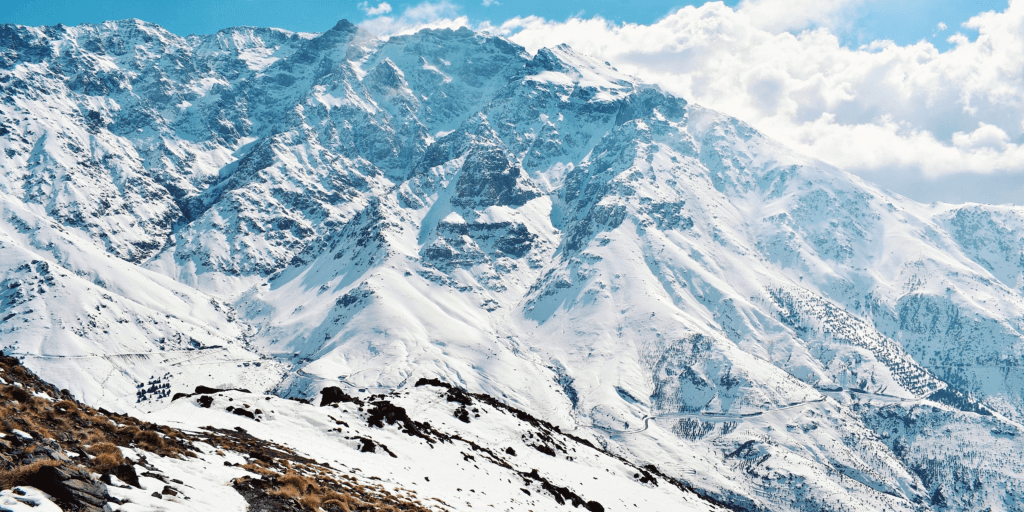
Oukameden’s position in the High Atlas Mountains, as one of Africa’s most northern ski resorts, has been an interesting skiing spot for decades. The resort is located approximately 49 miles (78 kilometers) south of Marrakech and is Africa’s highest ski resort. Visitors are a mix of tourists and local skiers, with the resort standing at over 3,000 metres (about 9,500 feet) and offering up to 10km of skiable slopes.
The highest ski resort, at 3,000 meters (nearly 9,500 feet), with up to 10 kilometers of skiable slopes.
The ski season in this area may stretch from late December to March. However, the high elevation affords optimum circumstances throughout January and February, when snowy weather with ideal’spring-like’ skiing conditions prevails. When you recall you’re in subtropical Africa, it’s not that awful.
What is the best way to get there?
Because there are few public transportation options in Oukameden, it is preferable to visit by automobile, which will take you less than two hours.
Because the resort is small enough to visit in a single day, you can ski until the lifts close at 3 p.m. and be back in Marrakech in time for supper. If you do not intend to drive alone, a shared cab is the most cost-effective alternative.
How steep are the slopes?
In Oukameden, there are seven lifts that serve all levels, including six drag-lifts that service the beginner’s nursery slope and the intermediate-level slopes, as well as a sluggish single chairlift that serves the more difficult slope.
The intermediate slopes are more appealing and have more manageable conditions, although the difficulty of each run varies greatly depending on the hill. At the bottom of the lifts, there is a well-kept nursery slope with a huge family sledding area that provides a better atmosphere for beginner-level skiing.
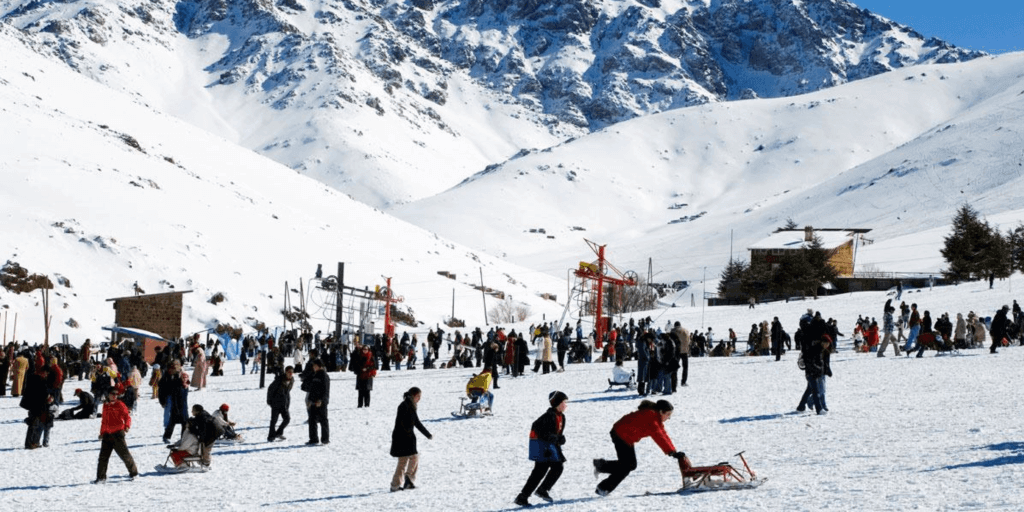
The resort has a limited number of routes, the longest of which is slightly over 2 miles (3km), with the runs from the top of the chairlift being the most difficult. As you descend, the snow may feel like hard off-piste ice in certain places. These runs are not for beginners and are best suited to intermediate to experienced skiers.
Is Morocco a good destination for rock climbing and mountaineering?
Yes, Morocco is a fantastic destination for rock climbing and mountaineering. It offers diverse terrain, including the Atlas Mountains and the Todra Gorge, which are popular among climbers.
What are the most popular climbing areas in Morocco?
Some popular climbing destinations in Morocco include Todra Gorge, Tafraout, Jebel el Kest, and the High Atlas Mountains. Each offers unique climbing experiences and stunning landscapes.
Do I need prior climbing experience to climb in Morocco?
Morocco caters to climbers of all levels, from beginners to experts. You can find routes suitable for your skill level, but it’s advisable to have some climbing experience and knowledge of safety procedures.
Are there climbing guides available in Morocco?
Yes, there are experienced climbing guides available in many climbing areas. Hiring a local guide is recommended, especially if you’re not familiar with the terrain.
What equipment should I bring for climbing in Morocco?
Essential climbing gear includes a harness, climbing shoes, helmet, carabiners, quickdraws, ropes, and a belay device. Depending on your location and the type of climbing, additional gear may be necessary.
Is it safe to climb in Morocco?
Climbing in Morocco can be safe when you follow safety protocols, use reliable equipment, and work with experienced guides. Be aware of weather conditions, and always prioritize safety.
Are there climbing regulations or permits required in Morocco?
Regulations can vary by location. In some areas, you may need permits or permissions to climb. Check with local authorities or climbing associations for specific requirements.
What is the best time of year for climbing in Morocco?
The best time for climbing in Morocco is during the cooler months, from late September to early May. Summers can be extremely hot in many climbing areas.
Spring (March to May):
Spring is considered one of the best times for climbing in Morocco. The weather is mild and comfortable, with daytime temperatures ranging from 15°C to 25°C (59°F to 77°F) in most climbing areas.
The snow in the High Atlas Mountains begins to melt, providing access to higher-altitude routes.
The days are longer, allowing for more climbing time, and the landscape is lush and colorful.
Autumn (September to November):
Autumn is another excellent time for climbing in Morocco. The weather is similar to spring, with temperatures ranging from 15°C to 25°C (59°F to 77°F).
The summer heat has subsided, making climbing more pleasant.
Crowds are generally smaller compared to the summer months.
Summer (June to August):
While summer can be hot in Morocco, if you plan to climb in the High Atlas Mountains or other higher-altitude areas, it can still be a suitable time. Daytime temperatures can be cooler at higher elevations.
Early mornings and evenings are the best times to climb during the summer to avoid the heat.
Winter (December to February):
Winter is not the ideal time for climbing in Morocco, especially in higher mountain areas, as temperatures can drop significantly, and snowfall can be heavy.
Coastal climbing areas might be more suitable during the winter, but it’s not the peak climbing season.
What types of climbing are available in Morocco?
Morocco offers various climbing styles, including sport climbing, traditional climbing, bouldering, The diverse landscapes cater to a range of preferences.
Can I rent climbing gear in Morocco?
Some climbing areas have gear rental shops, but it’s advisable to bring your equipment, especially if you have specific preferences for gear brands and sizes.
– Numerous shops and outdoor adventure companies in Morocco provide climbing gear rental services.
– Rental options typically include equipment like ropes, harnesses, helmets, carabiners, and climbing shoes.
– Prices and availability may vary depending on the location and the specific gear you need.
Are there accommodations near climbing areas in Morocco?
Yes, you can find accommodations ranging from campgrounds and guesthouses to hotels near popular climbing areas. It’s a good idea to book in advance, especially during peak climbing seasons.
What are some additional outdoor activities available in climbing destinations in Morocco?
Many climbing destinations in Morocco offer opportunities for hiking, trekking, and exploring the surrounding natural beauty. You can also experience local culture and cuisine in these areas.
Climbing in Morocco is a fascinating and unique experience for climbers of all abilities. With adequate planning, safety precautions, and adherence to local rules, you may enjoy the gorgeous scenery and fascinating climbing possibilities that this nation has to offer.
Please let us know if you want to add a climbing day to your itinerary!






